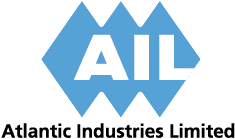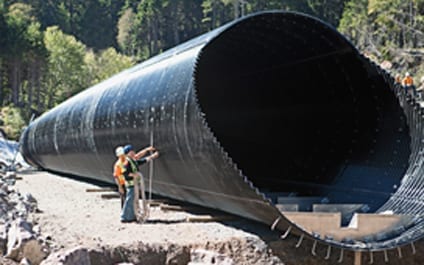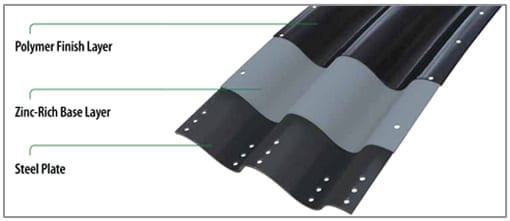Canada building on Europe’s success with Polymer Coated Plate
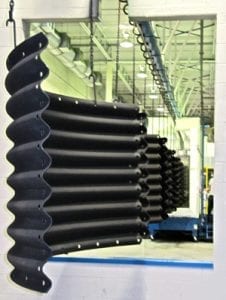
Coatings on steel are proving to be the way of the future in our industry, with different types of coatings and processes for the various products available.
New system extends structural plate’s service life to 75+ years
In use since the early 1970s, many are familiar with the enhanced performance that the Polymer-Lamination process adds to Corrugated Steel Pipe (CSP), but fewer are aware of the 75+ years of service that the newer Polymer Coating System delivers to structural steel plate in aggressive environments.
Over 30% of Eastern Europe’s plate structures are coated
First used in Eastern Europe in the mid-1990s, this area now uses Polymer Coating on over 30% of their new structural plate installations, which have gained a larger share of the bridge and tunnel market because of it. Our AIL Group Licensee in Europe, Viacon, has been breaking new ground in using Polymer Coatings on Super•Cor® with many successful installations in their portfolio.
Used in Canada since 2005
The success of this coating method in climates like Finland led Canada to start using the system in 2005. Of the 20+ installations now in Canada, many are from AIL, with the coating applied to all or part of the structure.
A decade of positive results and third party scientific testing have concluded that the Polymer Coating is more effective in aggressive environments than Hot-Dip Galvanized, Aluminized Type 2 or Polymer Laminate.
Polymer Coatings on CSP and Structural Plate are inherently different
CSP’s Polymer Laminate is applied to flat galvanized steel before forming and, due to the additional stresses during forming, the lamination process is limited to the shallower corrugation profiles and thinner substrates of smaller structures. The Polymer Coating, like AIL’s Best•Kote, is a two-step process where an Ethylene Acrylic Acid polymer top coat is electrostatically sprayed onto formed plate sections that have been pre-coated with a specially formulated, zinc-rich primer.
The polymer topcoat provides superior barrier resistance to corrosion, abrasion and inorganic acid, salts or alkali (diluted), while the zinc-rich base layer provides additional corrosion resistance and galvanic protection to the underlying steel substrate.
Canada’s high use of de-icing agents and relatively acidic environments, create very fertile ground to grow the market share for structural plate with the new dual coating protection system. With an on-going commitment to research and innovation, professionals within the AIL Group of Companies and our extended network, are leading the way:
- AIL team presents technical paper to Transportation Research Board
In January of 2013, members of AIL’s research engineering team (Anna West, Kevin Williams and Phil Carroll) presented their technical paper, Added Longevity with Thermoplastic Polymer Coated Structural Steel Plate, to the Transportation Research Board’s 92nd Annual Meeting in Washington, DC. The paper focuses on laboratory tests, a recently developed performance guideline and field installations to demonstrate the proven performance of the coating system. Download The PDF >> - AIL Licensee develops white paper on calculation method for expected service lives
In 2007, Paul Kukkonen, a member of our European Licensee, Viacon, presented his white paper, Expected Service Life Analysis of Steel Culverts in Finland, to the 1st Buried Flexible Steel Structures Conference. The paper describes the calculation method he developed to estimate the expected service life of a structure with the duplex system, based on a variety of circumstances and functions. Download The PDF >>
